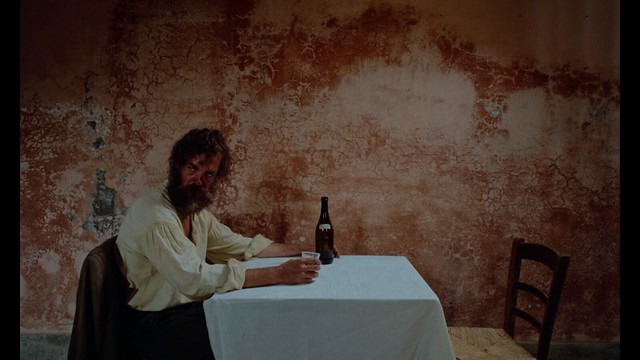









 I am a fan of people's faces in films. Uglier, craggier the better. They tell thousands of untold stories on their own. No explanations necessary. And they leave lasting impressions long after I forget the plot of the films they peek their heads in. I remember an ageless street urchin's face, smoking silently in Sharunas Bartas's Three Days. I remember Harry Dean Stanton's weathered face in Slam Dance. Denis Lavant's too with that ugly smile. More recently, I remember the face of Amador Arias in Fire Will Come.
I am a fan of people's faces in films. Uglier, craggier the better. They tell thousands of untold stories on their own. No explanations necessary. And they leave lasting impressions long after I forget the plot of the films they peek their heads in. I remember an ageless street urchin's face, smoking silently in Sharunas Bartas's Three Days. I remember Harry Dean Stanton's weathered face in Slam Dance. Denis Lavant's too with that ugly smile. More recently, I remember the face of Amador Arias in Fire Will Come.
Same here in The Tale of King Crab, by documentary filmmakers Alessio Rigo de Righi and Mateo Zoppis, trying their hands on fiction - a hybrid of documentary elements with fictional retelling of a folklore or two. The film starts in present-day with the old and craggy residents of a small town in Italy, all played by locals, telling each other a folklore that's handed down from generations to generations. Their faces are so distinctive inside a dim hut, they resemble van Gogh's Potato Eaters.
They tell the stories about Luciano (Gabriele Silli), a local drunkard with bad temper who abandoned his aristocratic lineage and making enemies with peasants and landowners alike. The story goes and we get to see them reenacted as Luciano falls in love with a sheepherder's daughter (all grown up Maria Alexandra Lungu, who played the memorable child lead in Alice Rohrwacher's The Wonders). But a local aristocrat landowner has hots for her and as he stops allowing locals to use his property to be used as a footpath becomes a crying rally for hot blooded Luciano. And their confrontation ends in tragedy.
Silli too, has that face: A scar runs down on his forehead, his unkempt beard and wild hair hides his past secrets but its his penetrating steel blue gaze stops you in your tracks. After burning down the village gate in a fit of rage, Luciano is banished to the end of the world (in this case, South America). But he resurfaces again as he takes an identity of a dying priest he met in an Argentinian wilderness and inherit a giant red land crab who works as a compass to find a hidden Spanish treasure atop of mountain lagoon.
We don't get to know, if the later half of the story is a folklore or something the filmmakers came up with, because the narration of the local folks stops in the middle. After all, any stories handed down in oral tradition have thousands of additions and modifications. The temporality is out the window: the first story might have taken place in medeval times, as the second one takes place decades later. Who knows? But the transition between the two stories is so smooth and you don't even get to notice it or care, because you already have bought into Luciano's crazy adventure narrative and intrigue. The views are stunning as Luciano, the crab and other treasure hunters slowly venture up to the rugged, unforgiving Andes mountains as the film becomes an odd adventure/western.
Simone D'Arcangelo, cinematographer and DIT on various projects (Il Solengo and Woody Allen films), captures stunning landscapes and colors, resulting in dated, Herzogian beauty on grainy 16mm film. The Tale of the King Crab is that rare breed of films which inhabits both past and present; harkening back to the ambitious days of cinema of the 60s and 70s, possessing that spirit of capaturing a fever dream that was/is cinema and all knowing modern sensibility to experiment and be playful at the same time.
The Tale of King Crab is an adventure in more ways than one. Silli's recurring craggy face with his smooth, clear voice guides us through the most unlikely places both the narrative and form, making a delicious concoction, worthy of its spectacular crustacean subject.
The Tale of King Crab opens in theaters 4/15 in New York and 4/29 in Los Angeles and national rollouts to follow. Please visit Oscilloscope website.